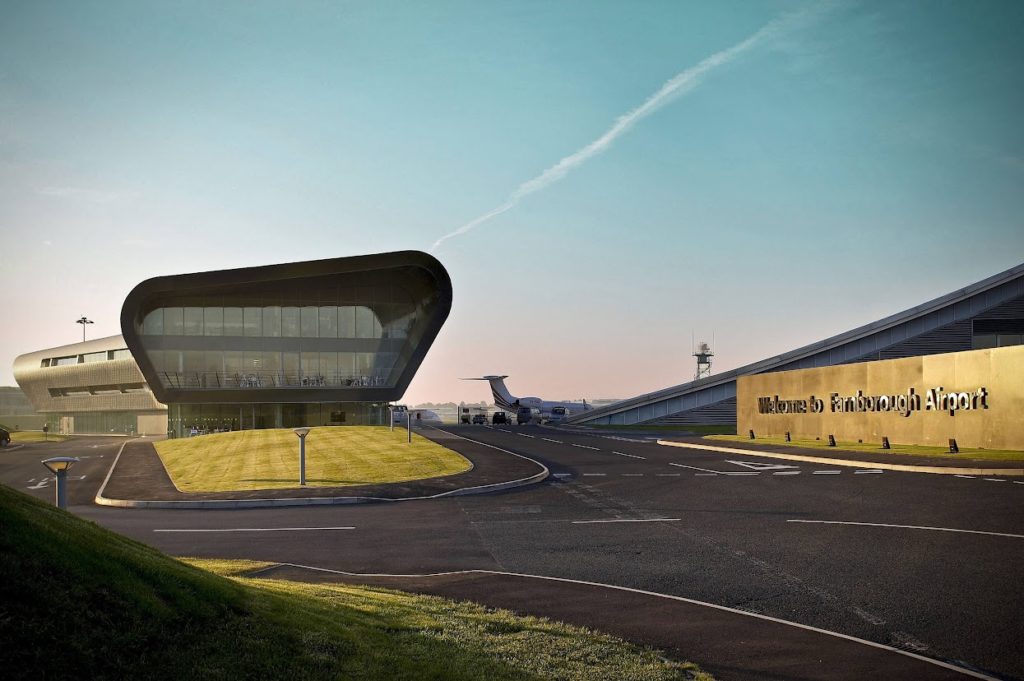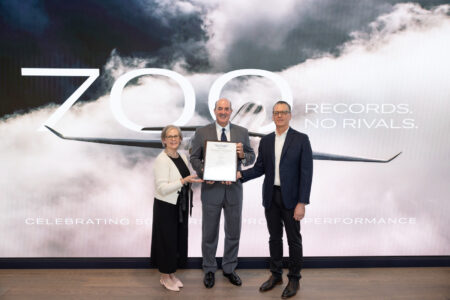Farnborough Airport in London, UK experienced a rise in traffic last year and expects an increase this year, despite a softening market for business aviation.
Farnborough, which is the UK’s only dedicated business aviation airport, handled 33,120 aircraft last year, a 27% increase compared to 2021’s total of 26,007.
The movement figures for 2022 represent a 2% increase compared to pre-pandemic 2019, when 32,366 aircraft landed and took off at Farnborough airport.
Speaking at a press event at the Airport last week, Simon Geere, CEO of Farnborough Airport said, “The first six months of 2022 we were still experiencing the post pandemic surge, but in the second half was affected by hosting the airshow and a softening market.”
Geere added that restrictions to the number of flights the airport can handle at the weekends and public holidays, meant they were turning away customers who would the use alternative London airports.
Planning constraints agreed with the local authority limit the airport to handling 8,900 flights at the weekend out of an annual capacity of 50,000.
 “Ultimately our weekend cap needs looking at because it will slow growth down,” Geere said. “Those flights go to other airports: Luton, Northolt, Biggin Hill, Stansted, London Oxford, and fly more kilometres. There’s an inefficiency in the system.”
“Ultimately our weekend cap needs looking at because it will slow growth down,” Geere said. “Those flights go to other airports: Luton, Northolt, Biggin Hill, Stansted, London Oxford, and fly more kilometres. There’s an inefficiency in the system.”
Despite a tail off towards the end of 2022, Geere said Farnborough Airport was expecting a sustained level of demand during 2023. He said, “We are moving into a normalized market. We are confident we will see year on year increase in 2023 because in 2022 we artificially had to supress demand because of the weekends. But the market has softened, there is less activity generally.”
Hangar progress
 Work on building the airports Domus 3 hangar is continuing as planned. The 175,000 square foot hangar represents a significant increase in aircraft storage space at Farnborough, which currently hosts 240,000 square feet of hangar space.
Work on building the airports Domus 3 hangar is continuing as planned. The 175,000 square foot hangar represents a significant increase in aircraft storage space at Farnborough, which currently hosts 240,000 square feet of hangar space.
Domus 3 is scheduled to be opened January 2024 and will be an important part of the company’s strategy to attract more charter and fractional operators to be based at the airport. The airport currently hosts 63 operators, including NetJets and FlexJet.
Meanwhile Farnborough Airport has relaunched its website as part of a rebranding exercise that targets leisure customers through emphasising a variety of holiday destinations alongside business connectivity.
“We want to appeal to consumers and be thought of as aspirational instead of inaccessible,” said Geere. “I want business aviation to be perceived differently and I want to pioneer that here.”





